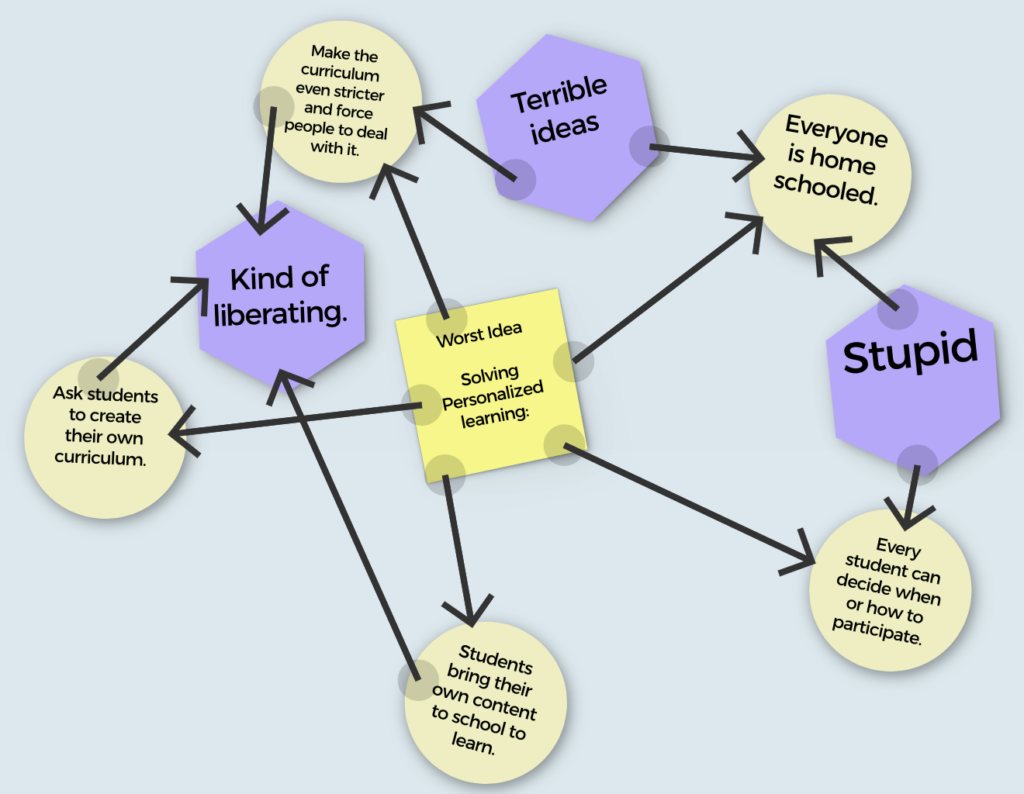Artifact 1: EDU761 EdTech Product
Throughout the entire semester, we have been working on our own EdTech product. The early stages of this process involved brainstorming, ideation, reflection and refinement. My group identified an issue that has affected all of us personally and wanted to create a solution which involved our passions. Mental Health is an ever growing problem not only at UNC but around the country. The lack of focus on this important topic is justified with a work hard-play hard attitude, evident across US campuses. Being affected personally, I wanted to provide a service that helped me dig myself out of negative spaces throughout my college life. The answer was exercise, nutrition, social life and extra curricular activities.
Step 1: Define, collect and prototyping
These were our initial prototypes. First we wanted to create a product which acts as a database for those seeking information about mental health and actions one can take to feel better. We conducted surveys and collected data from UNC students that suggested not enough resources were readily available to them or it was inaccessible. Waiting times for resources such as CAPS can be long. With this data we planned on collecting resources, meant to be available 24/7 with personal experience proving its validity. Then we planned on synthesizing that information so it would be more easily digested and accessible.
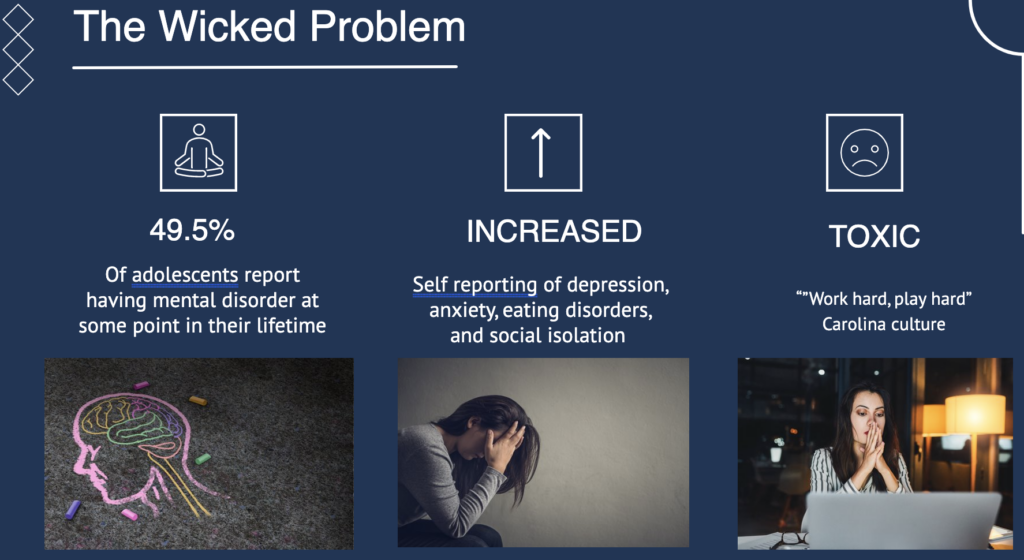
After identifying our wicked problem, we gather more information on the the problem and any potential solution. Plus the focus on the learners and what their goals will be.
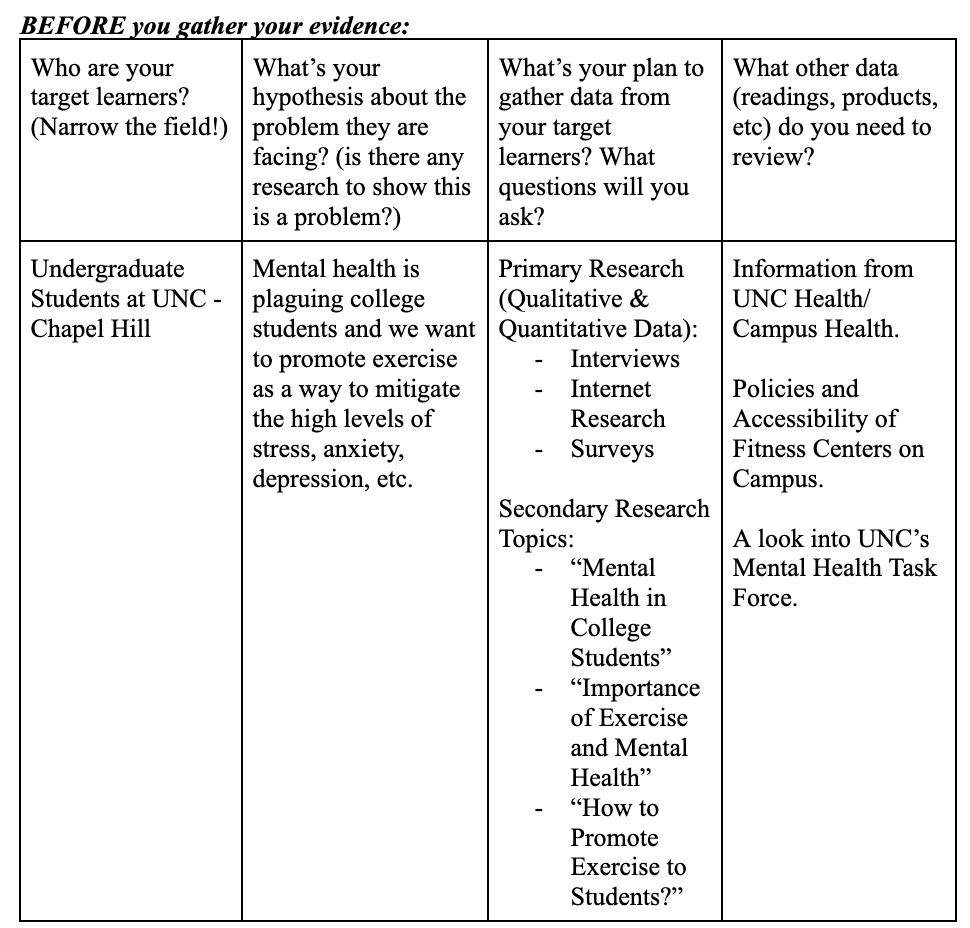
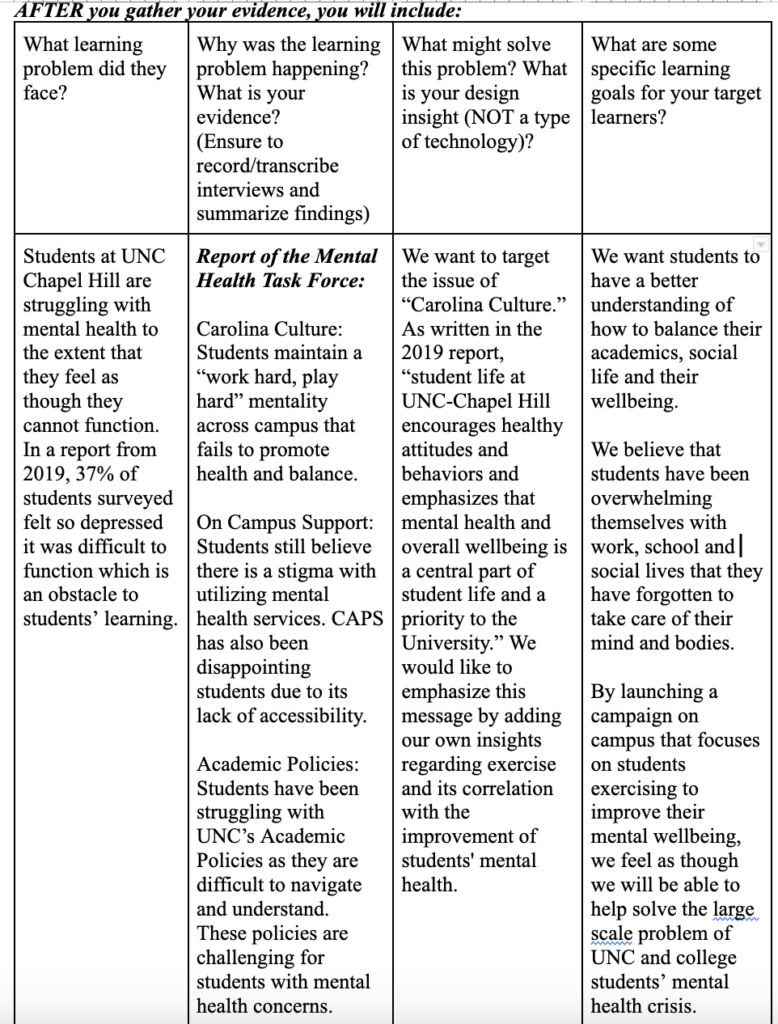
Our progress in Prototyping:
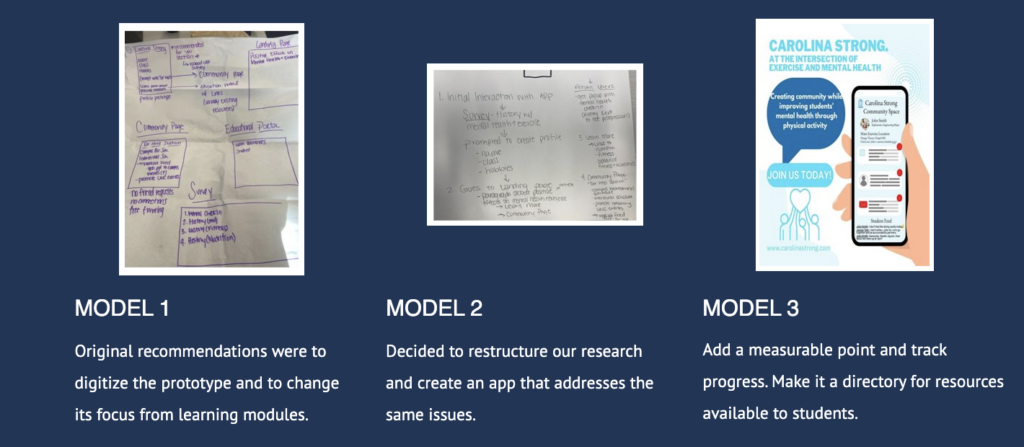
Step 2: Ideation
With our first prototype created, we started to collect feedback from our classmates and other UNC students.
We found the following:
- Digitize the product (for obvious reasons)
- Solution: We started to prototype an app. The look and feel had to be relevant to our target audience.
- Allow for the tracking of progress
- Solution: We added a variety of progress trackers to our product. All of which served to increase engagement with the app.
- Customize content based on the individual
- Solution: We added a pre survey to our app. This pre survey served to customize the resources to your liking.
- Make it more social:
- To make the app more of a social experience. We added a news feed and messaging. That way students could help one another find resources, encourage one another and also engage with the community as a whole.
Overall, this was a great project. We had a great time working together to solve the issues we faced and we used the feedback we received to improve our product.
Other Artifacts: Semester 1
Here are some of the artifacts I created throughout our first semester. My ideas jumped around a little as I changed my topic of focus last minute. These artifacts are all about creating a more personalized learning experience. However, I felt more intrigued by my new topic. Which was creating a digital platform in which students can directly connect with employers and work together to create a linear path to their future job. I enjoyed working on my personalized adaptive learning environment, as it is something I am building in my other classes as well.
Empathy Mapping
Below is an empathy map aimed at the behavior of students. My idea is to bring more adaptive and personalized learning into the classroom. By creating an empathy map, I can start to see the benefits, strengths and emotions involved with creating a product, designed to help students of all variety succeed in the classroom. Most importantly, I mention the alienation one faces when you are unable to compete and keep up with other kids. These experiences can have serious long term effects on the students confidence and motivation. A system that is setting you up to fail wrongly encourages those not suited for it to give up rather than providing them a platform on which to succeed on.
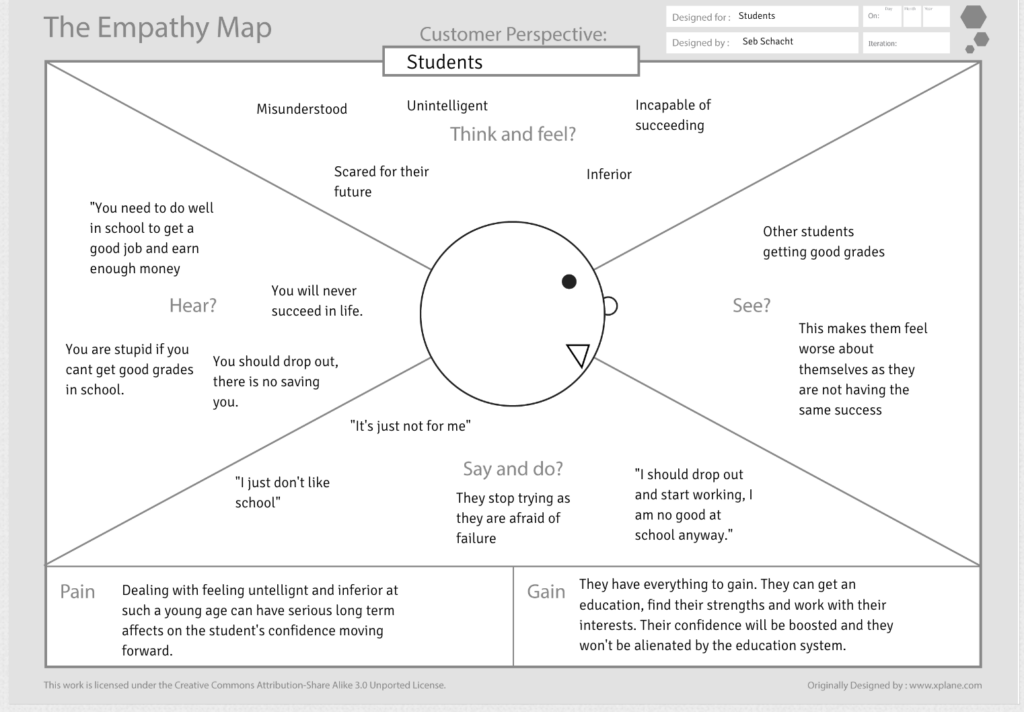
Activity #2 Reverse Engineering a persona
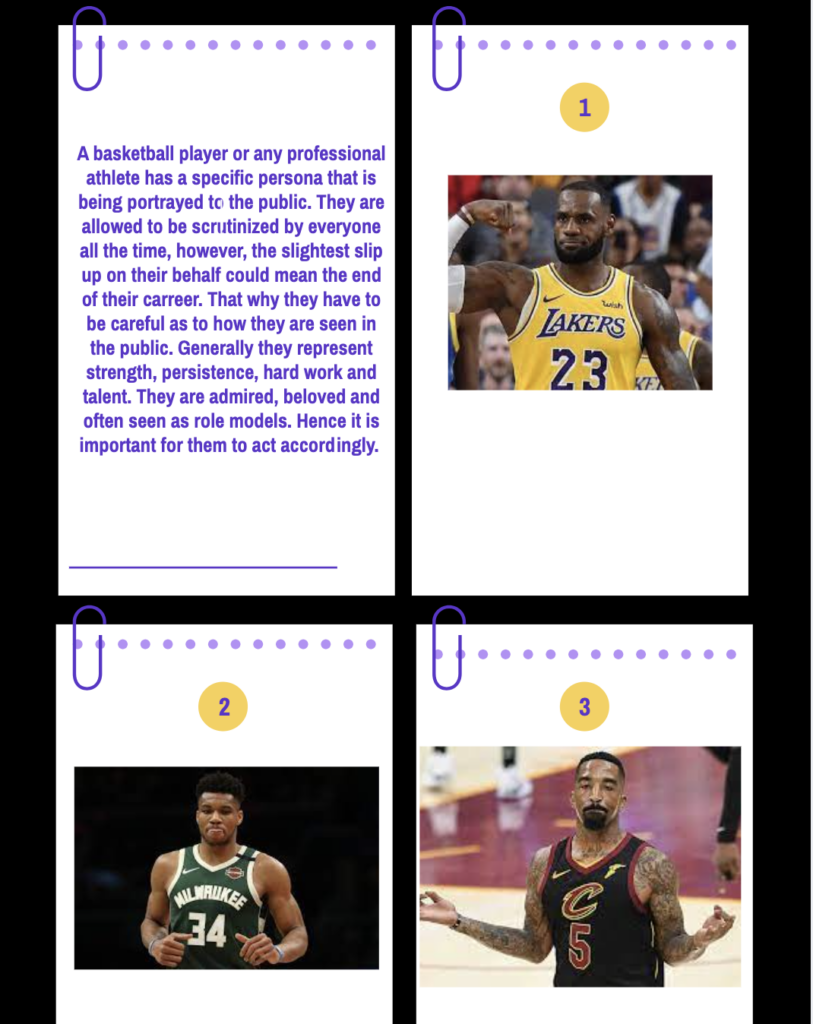
#3 Ideation
For the ideation part of my site, I wanted to use the “worst idea” concept. By brainstorming the worst possible ideas I found some success in eliminating ideas that are completely useless. By doing so, not only do I narrow down my potential solutions, but it is also liberating to see the humorous side of the potential solution. Of course, many of the ideas will never be implemented or even looked at however, it does show some of the absolute extremes that one can go to solve a wicked problem. I enjoyed this exercise because it took some of the pressure off finding a good solution. I understand it’s a huge problem that needs addressing, with this I have a starting point.
